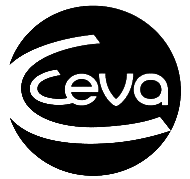The information system is now the backbone of any modern organization, acting as the interface between data, business processes, and company stakeholders. An IS is defined as the set of resources that collect, store, process, and disseminate information within an organization.
In the digital age, understanding the impact of an IS on organizational performance is crucial. According to Forrester Research (2023), companies with high-performing information systems show 25% higher profitability than their competitors. More than just a technical infrastructure, an IS represents a complex ecosystem where business strategy and technology converge.
The Essential Components of an Information System
Hardware Infrastructure
Hardware infrastructure forms the physical foundation of the information system. It includes servers, computers, peripherals, and network equipment. Infrastructure investments represent an average of 35% of companies’ IT budgets. The emergence of cloud computing has transformed this component, with 76% of companies using at least one cloud solution.
Software Solutions
Software solutions form the functional core of the IS, enabling data processing and process automation. They include ERPs, CRMs, and collaborative tools. According to Gartner, 68% of organizations prefer a hybrid approach, combining standard solutions and custom developments.
Human Capital and Organizational Factors
The human factor represents a fundamental yet often underestimated dimension. The IT Department defines the digital strategy in alignment with business objectives. IS projects that implement a structured change management approach are 6 times more likely to achieve their objectives (Prosci, 2023).
Data, the Core of the System
Data constitutes the central resource of any information system. Its quality directly correlates with the relevance of decisions made. According to IBM, costs related to poor data quality reach $3.1 trillion annually in the United States. GDPR imposes strict obligations with fines of up to 4% of global annual revenue.
The Main Categories of Information Systems
Operational vs. Decision Support Systems
Operational systems support the company’s daily activities. ERPs are the prime example, with a global market estimated to reach $117 billion by 2030.
Decision support systems transform raw data into information to facilitate decision-making. They include Business Intelligence tools and data warehouses, with projected annual growth of 8.7% until 2029.
IS by Functional Domain
Each business function has dedicated systems: Finance and Accounting IS, Human Resources IS, Production and Logistics IS, Marketing and Sales IS. Companies using advanced sales IS increase their revenue by an average of 29% (Salesforce, 2023).
Strategic Issues and Current Challenges
Digital Transformation and Innovation
Digital transformation is the major challenge for modern information systems. It involves adopting emerging technologies (AI, IoT, cloud) and reimagining business models. Modernizing legacy systems is crucial, knowing that 70% of IT budgets are devoted to their maintenance.
Cybersecurity and Data Protection
Cybersecurity is a critical concern, with incidents increasing by 37% in France in 2023 (ANSSI). The average cost of a data breach reaches $4.35 million. The regulatory framework has significantly strengthened, imposing strict obligations on organizations.
Performance and Business Continuity
System availability has become essential, with downtime costing an average of $9,000 per minute. Disaster Recovery Plans (DRP) and Business Continuity Plans (BCP) are indispensable for ensuring resilience against major incidents.
The Risks of a Poorly Managed IS
The main risks include technological obsolescence (60% of European companies use obsolete components), budget overruns (66% of IT projects exceed their initial budget), and misalignment with business needs (70% of digital transformation failures result from insufficient alignment).
Why Engage Experts for Your IS?
Benefits of Professional Support
Experts bring specialized technical expertise, strategic vision aligned with business objectives, and optimized resource management. IS projects benefiting from strategic support are 2.5 times more likely to achieve their objectives (Deloitte).
Available Support Services
Professional support includes audit and diagnosis, design and implementation, support and maintenance, as well as training and knowledge transfer to internal teams.
How to Choose the Right Partner for Your IS?
Select a partner by evaluating their technical expertise and industry references, methodology, and innovation capacity. Clarify contractual terms, performance indicators, and verify the scalability of proposed solutions.
Conclusion
The information system constitutes the nervous system of the modern enterprise, determining its ability to innovate and create value. The complexity of digital ecosystems necessitates support from experts who combine technical expertise with strategic vision.
Don’t wait for an IS failure to impact your business, contact our experts today for a personalized assessment. Together, let’s make your information system a powerful lever for growth.

















